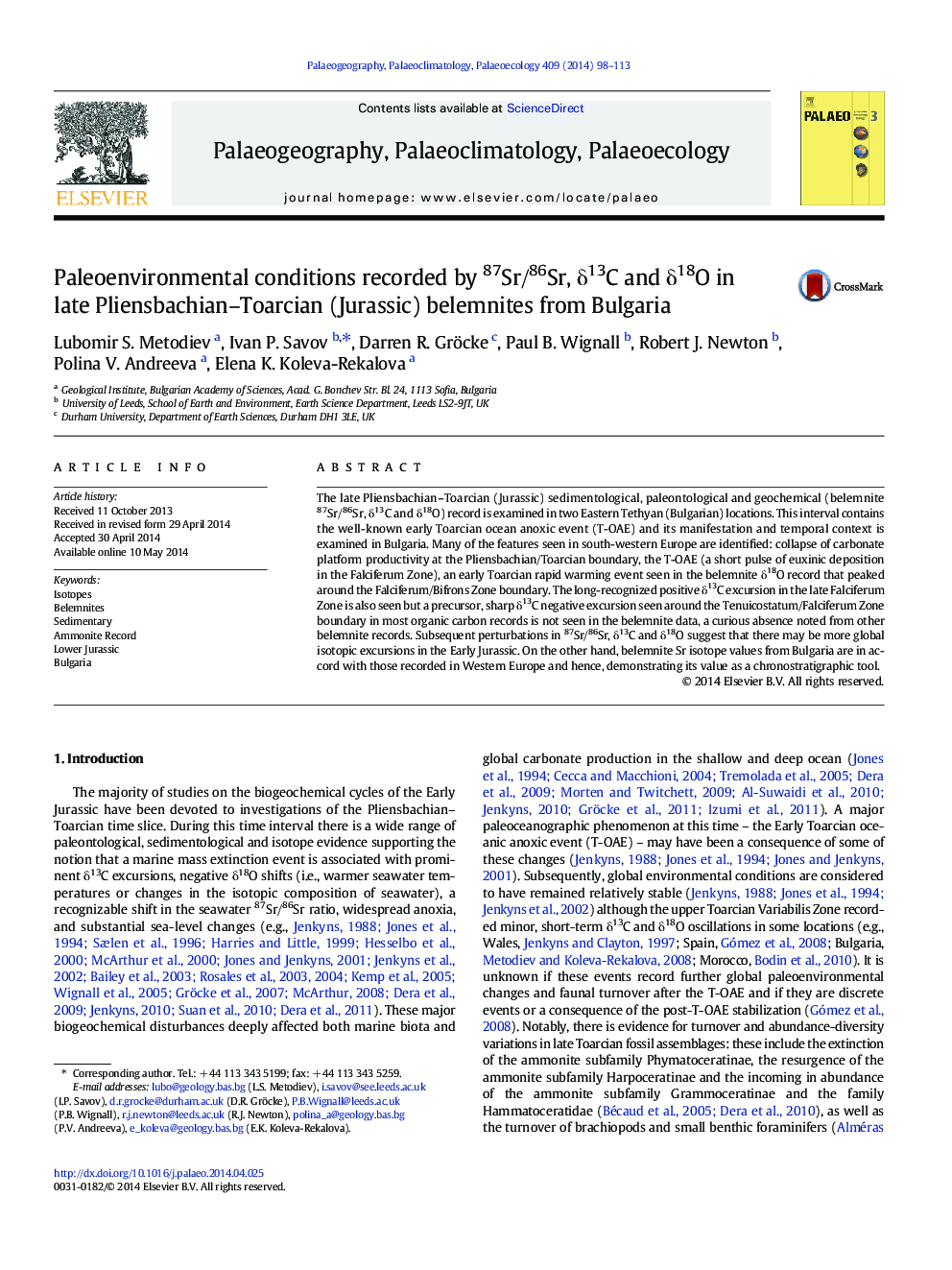| Article ID | Journal | Published Year | Pages | File Type |
|---|---|---|---|---|
| 6350085 | Palaeogeography, Palaeoclimatology, Palaeoecology | 2014 | 16 Pages |
â¢The U. Jurassic 87/86Sr, δ13C & δ18O record is examined in 2 Eastern Tethyan locations.â¢Many of the features seen in NW Europe are identified in the Bulgarian Balkan Mts.â¢Sr isotopes are in accord with those recorded in W. Europe.â¢Perturbations in δ13C and δ18O suggest that there may be more global isotopic excursions.
The late Pliensbachian-Toarcian (Jurassic) sedimentological, paleontological and geochemical (belemnite 87Sr/86Sr, δ13C and δ18O) record is examined in two Eastern Tethyan (Bulgarian) locations. This interval contains the well-known early Toarcian ocean anoxic event (T-OAE) and its manifestation and temporal context is examined in Bulgaria. Many of the features seen in south-western Europe are identified: collapse of carbonate platform productivity at the Pliensbachian/Toarcian boundary, the T-OAE (a short pulse of euxinic deposition in the Falciferum Zone), an early Toarcian rapid warming event seen in the belemnite δ18O record that peaked around the Falciferum/Bifrons Zone boundary. The long-recognized positive δ13C excursion in the late Falciferum Zone is also seen but a precursor, sharp δ13C negative excursion seen around the Tenuicostatum/Falciferum Zone boundary in most organic carbon records is not seen in the belemnite data, a curious absence noted from other belemnite records. Subsequent perturbations in 87Sr/86Sr, δ13C and δ18O suggest that there may be more global isotopic excursions in the Early Jurassic. On the other hand, belemnite Sr isotope values from Bulgaria are in accord with those recorded in Western Europe and hence, demonstrating its value as a chronostratigraphic tool.
